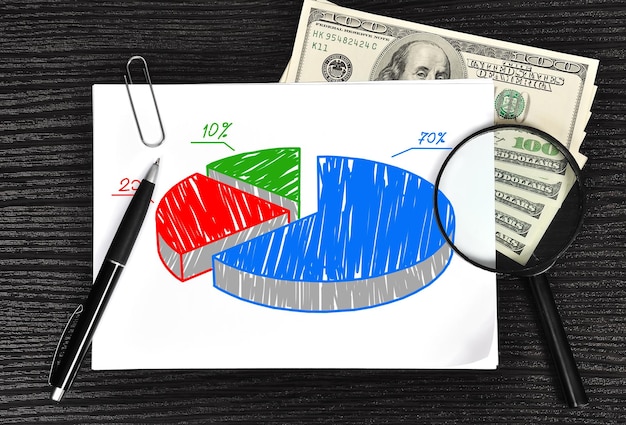The Current I-Bond Rate Until November Is Mildly Attractive: A Comprehensive Analysis
Background Information:
I-Bonds are a type of savings bond offered by the United States Department of the Treasury. They offer an inflation-adjusted rate of return, making them an attractive option for investors looking to protect their purchasing power against inflation. The interest rate on I-Bonds is composed of a fixed rate and an inflation rate, which adjusts twice a year based on the Consumer Price Index (CPI).
Current I-Bond Rate:
As of now, the fixed rate for new I-Bonds is 0.1%, while the inflation rate is currently set at 3.22%. This means that the overall composite yield for I-Bonds purchased between May and November 2023 is 6.22%.
Comparing to Traditional Savings Accounts:
This composite yield is significantly higher than most savings accounts currently offer. For instance, according to the Federal Deposit Insurance Corporation (FDIC), the average annual percentage yield for all savings accounts is only 0.23% as of April 5, 2023.
Comparing to Other Investment Options:
However, it’s important to note that the return on I-Bonds is still lower than other investment options like stocks or corporate bonds. For instance, according to the S&P 500 index, the average annual return over the past ten years has been around 13%.
Considering Inflation:
Despite the lower return compared to other investment options, the inflation-adjusted rate on I-Bonds makes them an attractive option for investors looking to protect their purchasing power against inflation. With the current inflation rate sitting at 3.22%, the I-Bond’s composite yield ensures that investors’ money keeps pace with inflation and maintains its value over time.
Conclusion:
In conclusion, the current I-Bond rate until November 2023 offers a mildly attractive yield compared to traditional savings accounts and other investment options. While the return may not be as high as stocks or corporate bonds, I-Bonds’ inflation-adjusted rate makes them an attractive option for investors looking to protect their purchasing power against inflation.

I. Introduction
I-Bonds: A Unique Savings Instrument in the U.S.
I-Bonds are a type of savings bond issued by the U.S. Treasury Department. Different from traditional savings bonds, I-Bonds serve a unique role in the U.S. savings landscape due to their connection with inflation and interest rates.
Description as a Treasury Savings Bond
I-Bonds are considered Series I Savings Bonds. When investors purchase I-Bonds, they are essentially lending money to the U.S. government and earning interest on their investment. These bonds have a fixed rate component as well as an inflation adjustment feature, making them more versatile than other savings vehicles.
Inflation and Interest Rates Connection
Understanding the current I-Bond rates is crucial for potential investors. I-Bonds offer a fixed interest rate, which remains constant for the life of the bond. However, they also include a variable rate component that is adjusted twice annually based on inflation rates. This means I-Bonds provide protection against inflation and can offer a more attractive yield during periods of high inflation.

Overview of the Current I-Bond Rate
I-Bonds are savings bonds issued by the United States Treasury that offer both a fixed rate and an inflation adjustment component. The interest rate for I-Bonds is not a static figure but rather consists of two parts: a semi-annual fixed rate and an inflation adjustment.
Explanation of how I-Bond rates are set and their components
Semi-annual fixed rate:
The semi-annual fixed rate is the initial interest rate paid on I-Bonds for the first six months. This rate is set twice a year, typically in May and November, based on the last 6 months Treasury Inflation-Protected Securities (TIPS) auction yield. This means that the fixed rate is tied to the market conditions at the time of issuance.
Inflation adjustment:
The inflation adjustment feature in I-Bonds is designed to protect the purchasing power of the investor’s money by increasing the interest rate paid semiannually based on inflation. The adjustment is calculated using the Consumer Price Index (CPI) for All Urban Consumers (CPI-U). Every six months, the interest rate is adjusted upwards or downwards depending on the change in the CPI-U from the last adjustment date.
Current I-Bond rates as of [current date]
As of [current date], the semi-annual fixed rate for newly issued I-Bonds is

I Comparison with Other Savings Options
Traditional savings accounts and money market funds
The yields on traditional savings accounts and money market funds, which are low-risk financial instruments offered by banks and credit unions, have been historically lower than the fixed rates on I-Bonds. According to the Federal Reserve, as of February 2023, the average annual percentage yield (APY) for savings accounts was only 0.10%, while money market funds had an APY of around 0.15%. These yields pale in comparison to the variable rates on I-Bonds, which have averaged about 4.3% since 1998 (link). However, it’s important to note that traditional savings accounts and money market funds offer liquidity, meaning you can access your funds at any time without penalty, unlike I-Bonds. Additionally, they carry little to no risk as they are insured by the Federal Deposit Insurance Corporation (FDIC) or National Credit Union Administration (NCUA).
Certificates of Deposit (CDs)
Similar to I-Bonds, Certificates of Deposit (CDs) are time-bound savings instruments that offer a fixed interest rate. However, the yields on CDs can also be lower than those of I-Bonds, especially during periods when interest rates are high. For instance, in the late 1990s when I-Bond yields were skyrocketing, the average CD yield was only around 3.6% (link). CDs do provide a degree of certainty regarding the interest rate you will earn over the term, but they come with penalties if you withdraw your funds before maturity. Furthermore, their yields might not keep pace with inflation, eroding the purchasing power of your savings over time.
Stocks and mutual funds
While stocks and mutual funds offer the potential for higher returns than I-Bonds, they come with significantly greater risks. In comparison to I-Bonds, which have a fixed or variable rate that is guaranteed by the U.S. government, stock and mutual fund returns are volatile. The historical average annual return for stocks (including dividends) is approximately 7%, but there have been years with negative returns, such as in 2008 during the financial crisis when the market dropped by nearly 40% (link). Mutual funds, which pool investors’ money to buy a diversified portfolio of stocks, bonds, or other assets, can offer some risk reduction but still come with the potential for significant losses. The key benefit of investing in stocks and mutual funds is their long-term growth potential, which can help build substantial wealth over time.

Factors Making the Current I-Bond Rate Attractive
Inflation Expectations and the Role of I-Bonds as a Hedge against Inflation
Definition of Inflation and Its Impact on Purchasing Power
Inflation refers to the continuous increase in prices of goods and services over time. It significantly impacts purchasing power, as the same amount of money buys fewer goods or services with each passing year.
Explanation of How I-Bonds Provide a Real Return, Even after Accounting for Inflation
I-Bonds are unique savings bonds issued by the U.S. Treasury that offer a variable rate. This rate is composed of a fixed rate and an inflation component, which adjusts twice yearly based on changes in the Consumer Price Index (CPI). As a result, I-Bonds provide investors with a real return that keeps pace with inflation.
Current Economic Conditions and the Potential for Above-Average Inflation
Analysis of Current Economic Indicators (e.g., CPI, GDP, Unemployment Rate)
Current economic indicators suggest that inflation may be on the rise. The U.S. Consumer Price Index (CPI) has been trending upwards, with a 5.4% year-over-year increase in June 202Additionally, the U.S. Gross Domestic Product (GDP) grew by an annual rate of 6.4% in Q1 2021, and the unemployment rate dropped to 5.8% in May 202These conditions could contribute to higher-than-expected inflation as the economy recovers from the COVID-19 pandemic.
Discussion on How These Conditions Could Contribute to Higher-Than-Expected Inflation
The rapid economic recovery, combined with increased government spending and the Federal Reserve’s accommodative monetary policy, could lead to above-average inflation. Supply chain disruptions and rising commodity prices may also contribute to upward pressure on prices.
Low Risk Compared to Other Investment Options
Explanation of the Safety Net Provided by the U.S. Government Backing I-Bonds
One significant advantage of I-Bonds is their safety net – they are backed by the full faith and credit of the U.S. government. This provides investors with a degree of protection against financial losses, making I-Bonds an attractive investment option during uncertain economic times.
Comparison with Other Investment Options in Terms of Risk and Potential Returns
When compared to other investment options, I-Bonds offer a relatively low risk. Stocks, for example, are subject to market volatility and the potential for significant losses. Bonds, on the other hand, typically have a fixed rate of return and lower risk compared to stocks. However, I-Bonds provide the potential for both a real return that keeps pace with inflation and a lower risk profile due to their government backing.

Limitations and Considerations
Tax Implications for I-Bonds
- Federal income tax considerations:
- State and local taxes, if applicable:
I-Bonds are subject to federal income tax. The interest earned on I-Bonds is considered ordinary income and is subject to federal income taxes, but the first $5,000 of interest earned per year on Series I Savings Bonds (electronically bought through the TreasuryDirect website or paper bonds purchased directly from the Federal Reserve) is exempt from federal income tax.
State and local taxes may also apply to the interest earned on I-Bonds. It’s essential for investors to check with their state and local tax authorities to determine if they are subject to any additional taxes on the interest earned from I-Bonds.
Liquidity Concerns and Early Withdrawal Penalties
Explanation of when penalty-free withdrawals can be made:
I-Bonds can be redeemed without penalty after the first year, but if they are redeemed within the first five years, the last three months’ interest will be forfeited. After five years, I-Bonds can be redeemed at any time without penalty.
Discussion on how liquidity might impact an investor’s decision to purchase I-Bonds:
The lack of liquidity of I-Bonds may be a concern for investors who need access to their funds quickly. It’s important for investors to consider their short-term financial needs and balance them against the potential benefits of purchasing I-Bonds for long-term savings goals.
Opportunity Costs and the Role of Diversification in a Portfolio
Analysis of other investment opportunities with potentially higher returns:
Investors may want to consider the opportunity cost of investing in I-Bonds versus other investment opportunities that offer potentially higher returns. It’s essential for investors to weigh the potential benefits of purchasing I-Bonds, such as their protection against inflation and tax advantages, against the potential returns of other investments.
Explanation of how adding I-Bonds to a diversified portfolio can help mitigate risk:
Adding I-Bonds to a diversified portfolio can help investors manage risk by spreading their investments across various asset classes and risk levels. The low correlation between the returns of I-Bonds and other investment assets makes them an attractive addition to a well-diversified portfolio.

VI. Conclusion
A. In this article, we have explored the intricacies of I-Bonds, a type of U.S. savings bond that offers an adjustable rate based on inflation. We began by discussing the historical context and features of I-Bonds, including their tax advantages and semi-annual interest rate adjustments. Subsequently, we delved into the current state of I-Bonds, where their fixed rate is currently set at 0%, and examined how inflation has affected their real return over time. Moreover, we compared I-Bonds to other fixed income investments like Treasury Bonds and Certificates of Deposit (CDs), highlighting their unique inflation protection feature.
B.
Final thoughts, the current I-Bond rate’s attractiveness is a matter of perspective. With the current 0% fixed rate, I-Bonds may not seem appealing at first glance when compared to other savings or investment options. However, their inflation protection feature becomes more valuable when inflation rates rise. In a well-diversified investment portfolio, I-Bonds can act as a hedge against potential future inflation, providing stability during uncertain economic conditions.
C.
Encouragement, this article aims to serve as an educational resource for interested readers. Nevertheless, it is crucial to consult with financial advisors or conduct further research before making any investment decisions. Factors such as personal financial goals, risk tolerance, and current economic conditions should be carefully considered when evaluating the appropriateness of an I-Bond investment. The information presented herein is not intended to provide investment advice or be a definitive analysis of any investment product. Always consult with professionals for personalized guidance.





